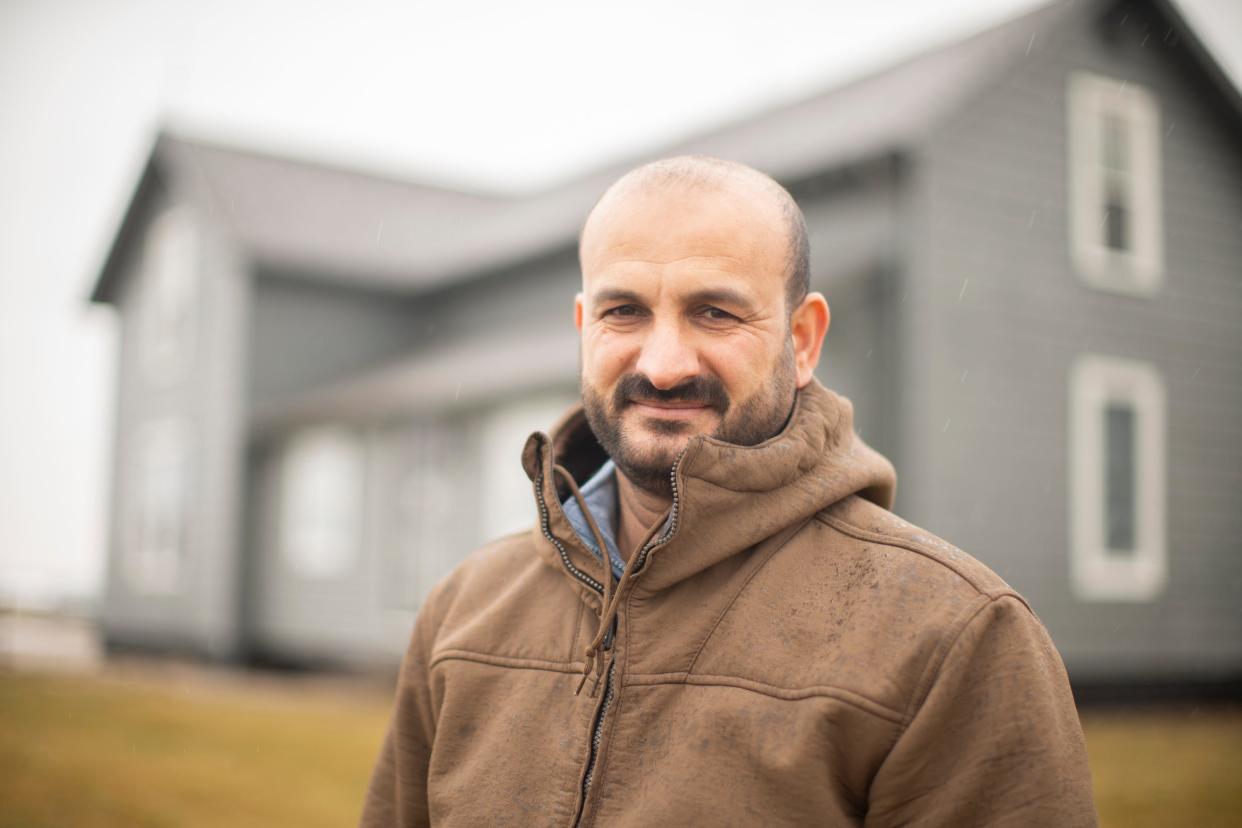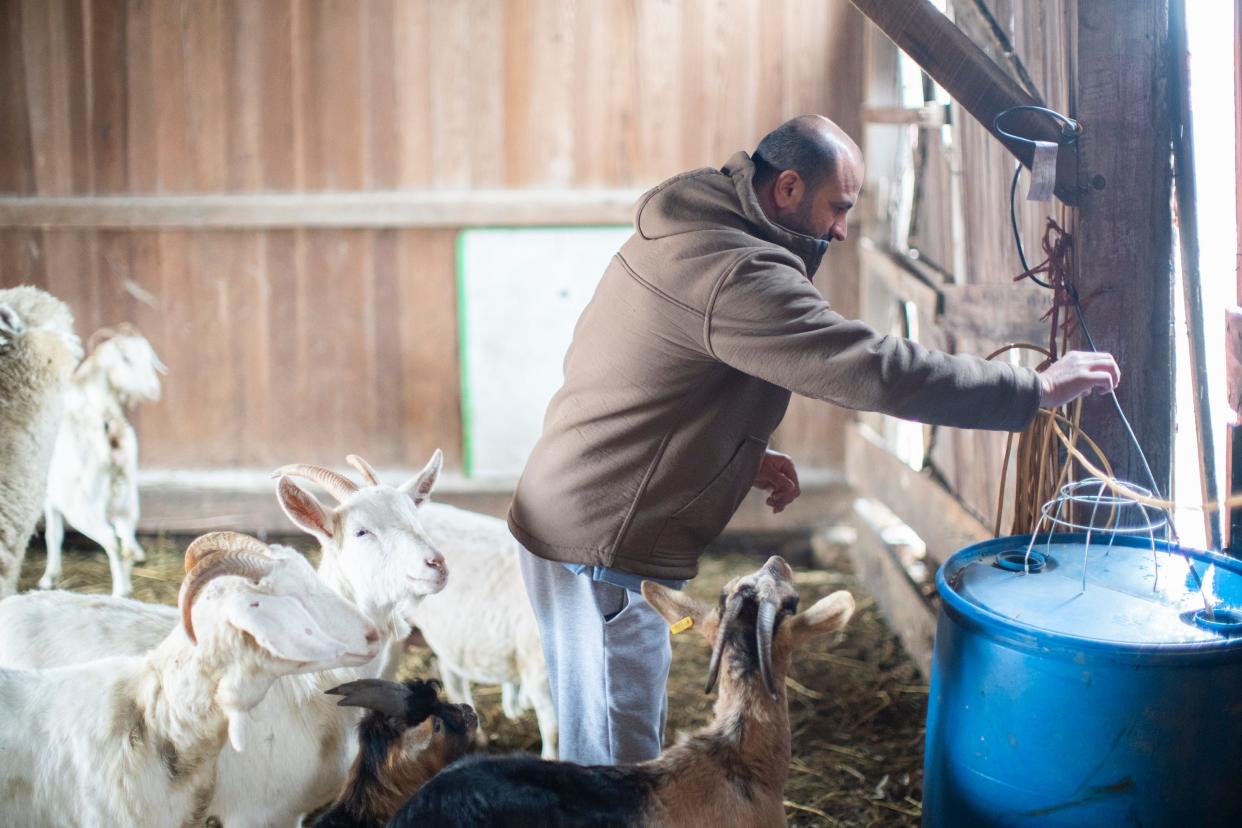Unlocking the American dream: Ohio immigrant homeownership growing, 35th in nation
After renting for around two decades, Mysa Khasawneh, an immigrant from Jordan, finally made a down payment for a two-bedroom house on Columbus’ Far West Side in October.
A mother of four — including one child with special needs — Khasawneh said that homeownership has allowed her to save money that she would have spent on rent and invest it in her children’s futures.
Now, she has been informally advising other women in the local Jordanian American community who are thinking of buying a home.
“I tell people to start small. Even if it’s not your ideal, it's yours. And then you can move. This house can be a down payment for another house. More people are going towards buying now, from my community,” said Khasawneh, who works as an early childhood services administrator.

Khasawneh is among around 59% of foreign-born Ohio residents who own their home, according to a Dispatch analysis of 2022 data from the U.S. Census Bureau’s American Community Survey. That’s lower than the percentage of native-born homeowners in Ohio — around 70% — but the data also shows that immigrant homeownership steadily increases with one’s length of residence in the U.S. For immigrants living in the U.S. over 30 years, the homeownership rate in Ohio is over 80%.
While homeownership can be key to many families’ financial progress, several factors can impede (or support) homeownership for immigrants, according to housing experts and community leaders. These include employment opportunities, wealth that immigrants acquire before immigrating, access to credit, a pathway to citizenship, housing discrimination and other factors.
Buying a home holds special significance for many new Americans, fostering a sense of belonging and integration in society, according to Ibrahima Sow, the former chair of Ohio’s New African Immigrant Commission.
“Immigrants and refugees … are looking for a place to call home. And homeownership is a no-brainer — that is how you become stable,” Sow said.

Ohio ranks 35th for homeownership among foreign-born residents
Ohio ranks 27th nationally among states for native-born homeownership and 35th for foreign-born homeownership, according to the 2022 data. Homeownership for both native- and foreign-born Ohioans declined following the housing market crash of 2008, but both have been rebounding for several years now.
Sharon Cornelissen has authored several papers about immigrant homeownership for Harvard University’s Joint Center for Housing Studies.
“The resources that people bring that allow them to successfully enter the housing market — it really is shaped by their histories of migration,” Cornelissen said.
A refugee from a rural background may have a harder time becoming a homeowner than a computer-programmer who immigrates after obtaining a work visa. But even immigrant doctors and lawyers sometimes face difficulty finding jobs commensurate with their skills, Sow said.
How housing market fluctuations correspond to one’s arrival in the U.S. can also affect immigrant homeownership.
Sudarshan Pyakurel, director of the nonprofit Bhutanese Community of Central Ohio, said that when Bhutanese refugees began resettling in Ohio in the late 2000s and early 2010s, homes were far cheaper and interest rates much lower than they are now.
“I know (Bhutanese Nepalis) who moved from New Hampshire, Colorado and elsewhere to Central Ohio because housing was so cheap here then,” Pyakurel said.

Potential challenges for immigrant homebuyers include access to credit, immigration hurdles and discrimination
The Dispatch’s data analysis shows a wide variation in homeownership among Ohio’s largest foreign-born groups, with the highest rate among people born in Vietnam (over 80%) and the lowest among people born in Somalia (around 10%). These rates include homes owned free-and-clear as well as those owned with a mortgage.
A major barrier to homeownership for some immigrants is access to credit, Cornelissen said. Many new Americans lack a lengthy local credit history, and some are used to operating in economies where buying things on credit is frowned upon.
“Credit score and building up a credit history is a key barrier for immigrants” in qualifying for affordable mortgages, she said.
Tariq Tarey, a Somali American who helps resettle refugees as director of new American services at Jewish Family Services in Columbus, said that Somalis often prefer to buy homes using Islamic financing. Islamic mortgages charge fees instead of interest, the taking of which is forbidden in Islam, but only certain banks provide the loans and going this route can make home-buying more complicated, he said.
And while some Somali Americans aspire to buy a home locally, others have invested in houses in East African cities like Nairobi, Addis Ababa, Cairo or elsewhere, Tarey said.
There are those “who (are) not willing to buy a home because they don't want to raise their kids in the United States,” he said.
Khasawneh said that many Jordanian immigrants — especially men — also feel pressure to send money to family members back in Jordan, which can make it more difficult to save up to buy a house.
For others, a lack of citizenship or permanent residency status can discourage foreign-born people from purchasing a home, Cornelissen said.
This affects not only undocumented people but also professionals like Indian-born U.S. residents on employment visas who face a decadeslong and uncertain wait for a green card. This may explain why, despite being among Ohio’s wealthiest immigrant groups, Indian-born homeownership in the state is only around 51%, Cornelissen said.
Some immigrants may also face discrimination in the home buying process, which can take the form of “not being shown as many units, or they're being steered to kind of a specific location by their realtor, which fosters segregation,” Cornelissen said.
Some real estate agents are also impatient with immigrants who are first-time homebuyers and may require extra education about the technical aspects of loans, insurance and other details, Sow said.
But he said this is beginning to change as more immigrants and refugees become real estate agents themselves. They — as well as immigrant homeowners like Khasawneh — can offer important support to others in their communities seeking to purchase a home, Sow said.
“Some people pave the way, then start making that process much easier for people from the rest of the community— opening that door for others in their communities,” he said.
"We're immigrants," said Khasawneh. "We left our country. … Most of us owned our land, our houses (there). To make it the same way here — it's considered our home, our land."
Peter Gill covers immigration, New American communities and religion for the Dispatch in partnership with Report for America. You can support work like his with a tax-deductible donation to Report for America at: bit.ly/3fNsGaZ.
pgill@dispatch.com
This article originally appeared on The Columbus Dispatch: Immigrant homeownership growing in Ohio, 35th in nation
